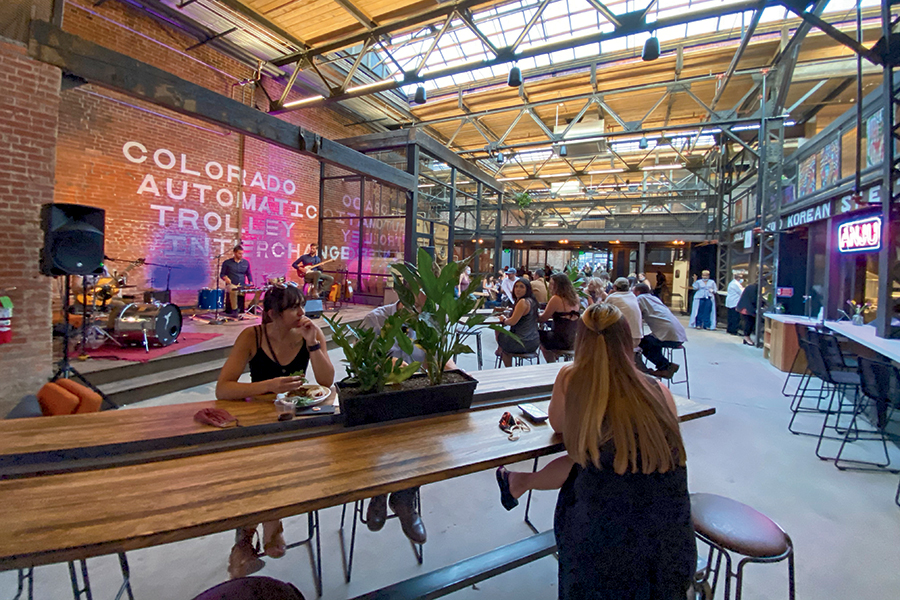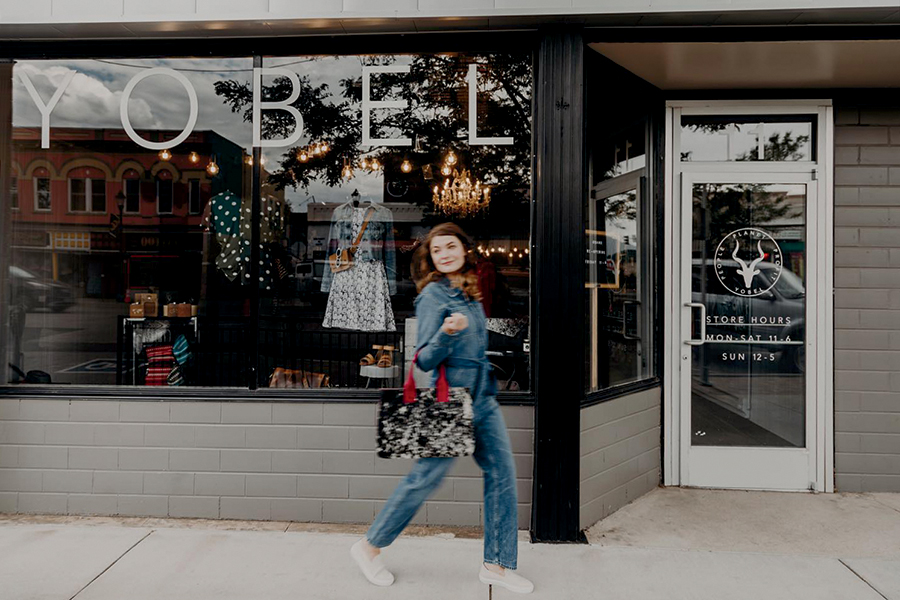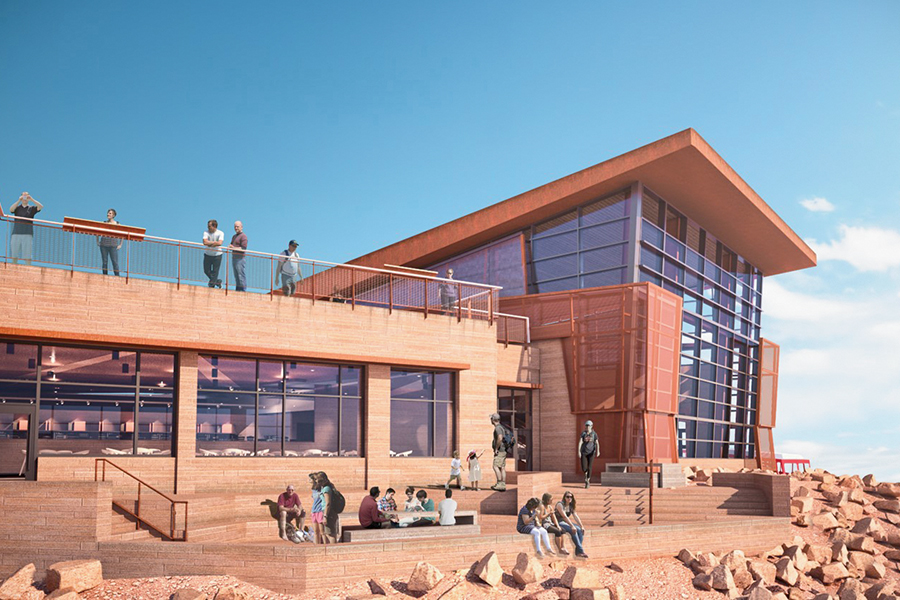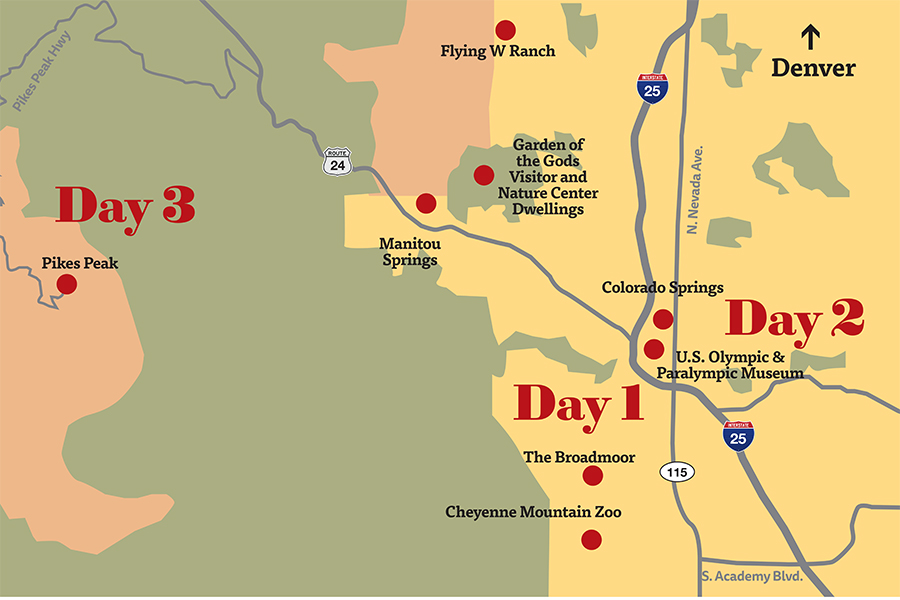Three Days In: Colorado Springs

Editor’s Note: As COVID-19 travel restrictions continue to evolve, please call ahead to confirm the status and hours of any place you plan to visit. EnCompass’ articles are only intended to inform its readers of the available options when traveling. We encourage readers to be mindful of all state and local orders related to COVID-19 safety guidelines and protocols.
If you’ve ever stayed at The Broadmoor, the sprawling, AAA Five Diamond-designated resort, clambered up the prehistoric red rocks at Garden of the Gods Park, marveled at the architecture of the Cadet Chapel at the U.S. Air Force Academy, or visited Cheyenne Mountain Zoo, one of the country’s top five zoos, you may think you’ve crossed off all the must-dos in Colorado Springs. We kindly disagree.
Colorado’s second-largest city is not only celebrating its sesquicentennial anniversary (150 years) in 2021, but it’s experiencing a renaissance—a flurry of development that’s invigorating the area with new restaurants, cultural offerings, and outdoor ventures. Instead of heading west this spring, course-correct south and (re)discover the Springs.
Day 1
The New South End

Artifacts, equipment, and memorabilia from Olympic and Paralympic athletes are proudly showcased with inclusive designs and assistive technologies. Courtesy of USOPM.org/Nic Lehoux
The sun strikes off the aluminum-paneled façade, ringing the U.S. Olympic & Paralympic Museum in a golden glow. Located just east of I-25 and Highway 24, it’s my first stop during this short getaway from Denver—and one I’ve been anticipating ever since the announcement that Tokyo 2020 was being postponed. As home to the Colorado Springs Olympic and Paralympic Training Center and the country’s Olympic and Paralympic Committee headquarters, the Springs has long referred to itself as Olympic City USA. The new 60,000-square-foot venue just cements the title.
Designed to be accessible for all, a pinwheel-shaped path runs continuously from the museum’s third floor down to ground level. RFID technology in each museum pass also allows visitors to set their accessibility needs so content and displays automatically adjust when they approach, giving them their own personalized experience.
After reading about the history of the Games and scanning a display of Olympic torches dating back to Berlin 1936, I get my first sampling of the museum’s tech-savviness: I line up on a two-lane track to take on an athlete of my choosing—running 0.1 miles alongside a virtual likeness. Losing is inevitable, but watching the video playback at the end makes me laugh. This museum, I’m giddy to discover, is fun!
I close my eyes and test my reaction time in goalball, a Paralympic sport for athletes with visual impairments—another of the many interactive activities available. I then proceed into a screen-lined room that makes me feel as though I’m walking in the Parade of Nations during Opening Ceremonies. I’m also able to ask athletes questions about their lives using an artificial intelligence interface. I pause often to study the impressive array of historic memorabilia—including Michael Johnson’s gold spikes and the wooden skis used by Steamboat Springs’ Billy Kidd in 1964. But the experience isn’t all about entertainment. There are more somber sections dedicated to issues such as doping and the major sociopolitical events that have impacted the Olympics throughout history. The information is absorbing, and I find myself reading every word. That is, until a growling stomach finally tears me away.

This culinary incubator allows local up-and-coming restaurateurs to hone their crafts, test new concepts, and bring unique dishes to diners. Courtesy of Visit Colorado Springs
Though I could walk across the plaza to the on-site Flame Café, I instead join my husband to make the short drive to the Trolley Building, a centerpiece of the up-and-coming New South End. The renovated space once housed downtown’s trolley cars and is now a hub of restaurants and bars, including the Exchange, an amped-up coffeeshop, and Denver imports like Fat Sully’s and Dos Santos Tacos. CO.A.T.I. (Colorado Automatic Trolley Interchange) is an industrial-looking culinary incubator with eight stalls ranging from Korean street eats to Texan-Creole mashups. In the picnic table-lined alleyway, my husband and I dig into a bibimbap-inspired rice bowl from Anju and mouthwateringly good fried catfish from Luchals. We pop open cans of Pikes Peak Brewing Co.’s Devils Head Red Ale acquired from the lager house next door.
Satiated, we’re ready for some downtime. SCP Hotel (which stands for Soul Community Planet) operates with a sustainable ethos and a fair-trade pricing model. It’s perfect for working travelers like us, offering access to plenty of socially distanced workspaces in trendy common areas, an on-site market stocked with local goodies, a 24-hour gym, and a regionally focused bar for mingling (when that’s advisable again). We’ll pick up oversized containers of rigatoni from Red Gravy to eat in our comfortable, if sparse, room later. For now, I lie back and pretend those digital cheers I heard earlier on the interactive track really were for me.
DAY 2
Downtown

Downtown Colorado Springs offers plenty of shopping, including Yobel, a social enterprise store where items are made by artisans from around the globe. Courtesy of Yobel
Energized by the açai bowls we picked up curbside at Ola Juice Bar, we drive 15 minutes west to the shared Mt. Cutler and Mt. Muscoco Trailhead in North Cheyenne Cañon Park. The road through the 1,000-foot-deep canyon cuts through 1.5 billion-year-old granite.
The four-mile, out-and-back trail up Mt. Muscoco is moderately difficult, as it steadily climbs over 1,000 feet. The relatively vertical start to the dirt path gets my heart pumping, but the route—and my heart rate—begin to even out less than a half-mile in when we cut right at the junction with Mt. Cutler. The real work comes during the last half-mile, which steepens and requires some extra-large steps and scrambles over large boulders. The payoff is well worth the sweat. From the 8,020-foot summit, we are hugged on nearly all sides by the verdant San Isabel National Forest, which plunges into a panorama of Colorado Springs to the east. We can even make out the maze of zip lines at The Broadmoor’s Soaring Adventure at Seven Falls.
Hungry and a little chilled from the two-plus-hour excursion in mild winter temperatures, we head straight to Mediterranean–inspired Shuga’s, a AAA-approved restaurant, for salmon Niçoise salads. Dessert comes in the form of Pikes Peak Lemonade’s house-made beverages, mixed with our choice of flavoring (hibiscus) and served in reusable mason jars. The charming downtown spot is the ideal starting point for a bit of retail therapy as its neighbors comprise some of the city’s best shops: Halo Boutique and the Local Honey Collective for fashionable women’s clothes; soothing bath and body goods at Rocky Mountain Soap Market; and Yobel, a brick-walled social enterprise store where the clothes, jewelry, bags, watches, and more are made by artisans from around the globe. When our wallets need a break, we head back to the hotel to clean up from our morning outing.
Colorado Springs has no shortage of good—even award-winning—eats, but we manage to narrow down our dinner options to two. Last spring, chefs Luis Young, chef de cuisine at The Broadmoor’s Penrose Room, and Brother Luck, a former Top Chef contestant, were named semifinalists for Best Chef: Mountain in the prestigious James Beard Awards. The swanky Penrose Room, a AAA Five Diamond-designated restaurant, is best enjoyed via Young’s tasting menu, but we’re in a more casual mood, so we decide on IV by Brother Luck. Inspired by the cuisines of the Four Corners region, the tight menu offers creative takes on familiar eats, like the uber popular tempura-fried jalapeño peppers, which the hostess (rightly) insists we order. Combined with the honey-sweetened blue corn bread, tender short ribs over blue grits, and perfectly seared salmon with a toothsome black barley risotto, we end the night satisfyingly stuffed.
DAY 3
Pikes Peak

The new Pikes Peak Summit Complex, scheduled to open in May 2021, will feature digitally interactive displays focused on the history, significance, and geology of America’s Mountain, as well as offer stunning views and, of course, freshly made donuts. Courtesy of City of Colorado Springs
Pikes Peak—the inspiration for Katharine Lee Bates’ “America the Beautiful”—keeps a watchful eye over the city at 14,115 feet. Thankfully, unlike many of the state’s fourteeners, a visit to its summit doesn’t require waking up before dawn for a demanding, miles-long hike. Rather, the mountain is easily accessible by car—and once again by train. Even if you’ve done the excursion before, it’s set to become even more enjoyable this spring.
After picking up New York–style bagels from Olde World Bagel & Deli, we began the winding, 19-mile drive up Pikes Peak Highway Toll Road ($10/adults, $5/children/$35/carload up to 5 people). Through the car windows, we spot remnants of the original carriage road from the late 1800s and even catch sight of a bighorn sheep. The brown landscape looks like another planet, filled with boulder fields and rocks protruding at various angles. But we soon find ourselves firmly back down on Earth when the contemporary, in-progress Pikes Peak Summit Complex comes into view. The new 38,000-square-foot venue is double the size of the old visitors’ center, and it’s scheduled to open in May, meaning we can’t yet shop for souvenirs, devour the famed hot doughnuts on the terrace, or engage with the interactive history displays. Instead, we meander along the freshly paved walkway, taking in panoramic views that extend all the way to Denver. We stop for a photo-op at the summit’s rock marker and chug some water—even as Colorado residents, this high elevation leaves me feeling sluggish and winded after about 30 minutes. Carved into the stone below our feet are various Native names for Pikes Peak, such as “Mountain Touching Heaven.” On the east side of the Summit House, we spot the new platform for the Broadmoor Manitou and Pikes Peak Cog Railway. The 130-year-old attraction braked in late 2017 for updates (which included adding heated train cars), but beginning in May, it will once again shuttle visitors to the peak from Manitou Springs. I mentally file the journey away for our next visit.

The Broadmoor Manitou and Pikes Peak Cog Railway is on track to re-open in May 2021, featuring new trains, a new depot, and a new rail line to transport passengers to the top of Pikes Peak. Courtesy of Visit Colorado Springs
Back down the hill, with more oxygen in our lungs, we grab a patio seat at AAA Three Diamond-designated Marigold Cafe & Bakery. Over tuna sandwiches, we ponder all of the other activities still to do: strolling through Old Colorado City; wandering the galleries at the Colorado Springs Fine Arts Center at Colorado College; and getting a history lesson at the National Museum of WWII Aviation.

Flying W Wranglers are back on stage after the ranch was destroyed by the 2012 Waldo Canyon fire. Courtesy of Visit Colorado Springs
They’ll have to wait for next time. We have a reservation for the early evening show at Flying W Ranch. The venue originated as a cattle ranch in 1947, but now hosts seasonal Chuckwagon dinners and Western shows. Destroyed in the 2012 Waldo Canyon fire, the ranch was rebuilt and reopened in July. (The summer season begins May 21.) Hot cocoa in hand, we tap our feet to the Flying W Wranglers’ twangy tunes and dig into a Western BBQ spread. As I listen to the five wranglers—including the first woman wrangler in the ranch’s history—I can’t help but think that this venue’s revival mimics Colorado Springs’ itself. In the midst of its own reinvention, the city may not be a new destination—but there are plenty of new reasons to visit.
More “Three Days In”
Watch your inbox for more things to do in Colorado Springs in the next EnCompass Exclusive e-newsletter—a monthly email that provides exclusive content you won’t find in the print edition. Plus, keep an eye out for the next series of “Three Days In” in the Summer 2021 (June/July/August) edition of EnCompass.





